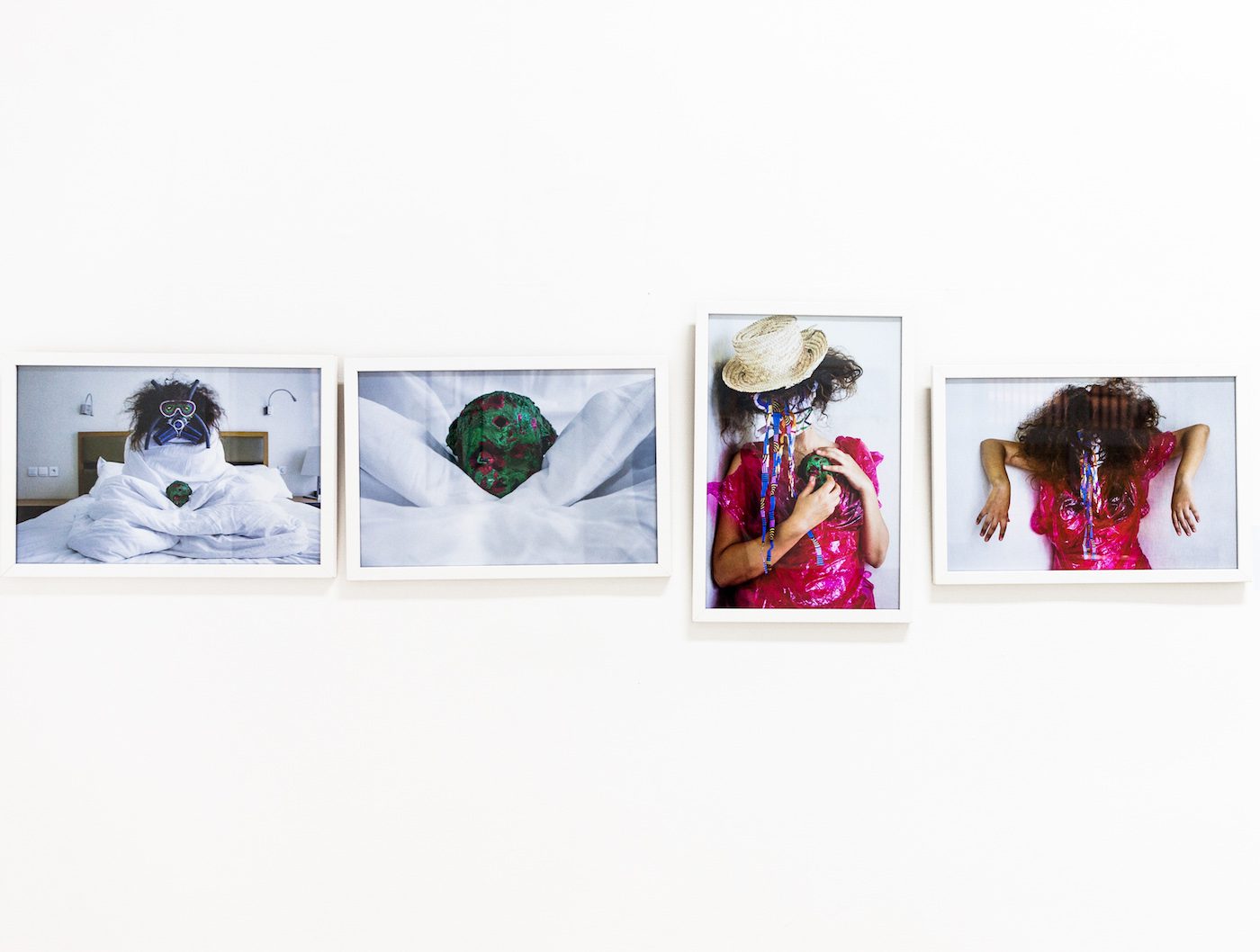Local and international photographers have converged in Yaoundé for the third edition of “YaPhoto” this March. Between vernissages, educational offerings, and debates, they have been sharing and exchanging ideas on the topic of “Remanence.” The event has been conceived as a tribute to the recently passed cultural producer Bisi Silva. This year independent curator Yves Chatap focuses the festival on questions about artistic persistence in the face of losses.

Wilfried Nakeu et Chaima Zaafouri, Carrefour. Photo: Daniel Beloumou
“The challenge of local engagement is that it complicates the execution of biennales in any city, peripheral or otherwise. However, it is a priority to broach this question in contexts where a large proportion of the local population are not used to contemporary art and the diverse means that it has to make sense of past events and current realities.” These words of Bisi Silva (1962–2019), spoken in the context of the tenth edition of the African Photography Encounters biennale in Bamako in 2015, served as the conceptual basis for the organizers of YaPhoto 2019. These reflections on the part of the late Nigerian curator convey, in a few words, the situation patently visible in the artistic landscape in Cameroon.
Contemporary art is everywhere, occupying both time and space in equal measure, but very few people notice it if it is not underscored by the creativity of artists and curators. YaPhoto, which stands for “Yaoundé Photography,” the fortnight that has, for four years, been dedicated to contemporary photography in the Cameroonian capital, is positioned as an awareness-raising venture, capable of awakening the interest of all sectors of society. It is an uphill task, but over the years the deployment of a dynamic team, originally led by the Cameroonian curators Christine Eyene and Landry Mbassi, have steadily enhanced the standing of this festival, which takes place in a Cameroonian setting where art in general struggles to find its place. The artistic direction of this third edition (following the first two outings: “What We See” in 2016 and “Figuring the Present” in 2017) was entrusted to Yves Chatap.
This independent curator, art critic, and editor from Cameroon has an international reputation and lets his curious eye roam over the continent and beyond in search of images that embrace the general theme of the 2019 edition of YaPhoto, “Remanence.”
According to the standard definition, remanence is the persistence of a state after the disappearance of its cause. In brief, the effect remains every bit as vivid after the end or death of what lies at the origin. For Yves Chatap, getting closer to the work of Bisi Silva—which left an indelible mark, influencing the spread of African art throughout the world—and the idea of remanence go hand in hand. It is a fitting tribute, and the responses on the part of the national and international artists selected for the exhibition have been both elegant and subtle.
Inspiring Exhibitions
“The remanent image attests to the metamorphosis, while authenticating what is no longer visible and at the same time reactivating the memory of the event.” Artistic director Yves Chatap’s credo was universally adhered to. Evidently, all the YaPhoto artists were able to demonstrate their determination to reveal their remanent side. From March 13 to 31, 2019, the gap between visible and invisible is developed in six locations, among them the Gallery of Contemporary Art Yaoundé, the National Museum, and German and French cultural centers.
Temporality plays a major role in the thematic context of “Remanence.” Time and the perennial concerns that it raises, the boundary, or absence thereof, between past, present, and future, are evoked by the photos. The young photographer Lionel Richy Ebongue (Cameroon) establishes a moment of meditation in Occupation, his series of four pictures presenting a young man who is the prisoner of his room and his television. The transparent silhouette of the main character shows the slow, monotonous movement enacted in this circumscribed zone between his bed and the TV. Where Ebongue chooses to express the idea of ennui, Chantal Edie and Zacharie Ngnogue (Cameroon) explore pain—the pain of losing one’s child. Visitors to the exhibition at the Gallery of Contemporary Art Yaoundé go through the drama experienced by the two photographers, captured in black-and-white pictures. At the beginning of the Unimaginable series, we see a pregnant woman smiling; at the end, a woman in tears holding the photo of her dead daughter. As Edie points out, “We wanted to show the world the psychological consequences of losing a child, as well as the loneliness of the bereaved parents.”

(left) Blaise Djilo, concertations; (center) Georges Tankam, Désordres urbains; (right) Ditoma Kadoule, Medellin. Installation view YaPhoto 2019. Photo: Daniel Beloumou
In Corridors of Hope, Mbadimma Chinemelum (Nigeria) teaches us how to remain positive, by contrasting stationary boats left at their moorings with other boats whose revving engines roar on the waves. The image of a man filmed from behind, sitting upright in a canoe, whose only horizons are the river and the forest, illustrates the power of confronting challenges when suffering seems to have swept away all hope. Sibusiso Tlhabadira (South Africa) plays with the occupation of space. He uses the repetition of color—red in this case—on black-and-white photos in order to tell a story of his hometown Johannesburg. Tlhabadira manages to grab some moments of calm and peace in the midst of a bustling metropolis. Two elderly women in front of the portrait of two young girls are used to set up the paradox of the passing of time, whose progress leaves its mark in the form of wrinkles.
At YaPhoto 2019, the stories that are told are both moving and remanent: they come from South Africa, Angola, Cameroon, Spain, the US, France, Mali, Morocco, Nigeria, the DRC, and Togo. Between vernissages, educational offerings, and debates, the Yaoundé Photography Fortnight continues to flourish.
YaPhoto is still open until 31 March, 2019.
Monica Nkodo is a journalist living and working in Cameroon.
More Editorial